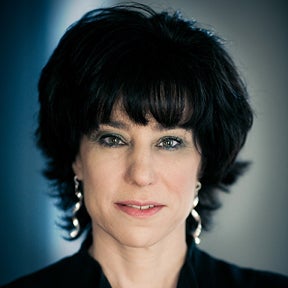By Mayuri Punithan
The glass ceiling. It’s the invisible barrier that prevents women from advancing equitably in an employment hierarchy. One of the most notable examples is the lack of women in cybersecurity and privacy, which intersects with many STEM fields. Despite studies indicating that girls tend to perform as well as boys in math and science during elementary and high school, only a few of them pursue STEM in post-secondary education.
Now the question is, how exactly do we break it?
Well, two UWaterloo cybersecurity and privacy experts, Catherine Gebotys and Maura Grossman, share their insights.

Maura Grossman’s research interests span from information retrieval in law and medicine, to AI, ethics, and data privacy. Her path to cybersecurity and privacy is rather unconventional, as she did not study it in university. Instead, she studied psychology and law; she even worked as a litigator in New York City for 17 years. As a lawyer, she found it difficult to find the relevant evidence that supported her case, frequently finding herself searching through large data sets, such as 5 to 10 million emails or documents. Thus, she started attending computer conferences such as the National Institute of Standards and Technologies’ Text Retrieval Conference. From there, she met Professor Gordon V. Cormack, who is a Waterloo computer science professor. He was a top ‘spam guru’ and used machine learning for spam filtering. After comparing experiences, they realized they both faced similar problems and decided to work together to find a combined solution.
I think we need more high school teachers or role models who are women in mathematics, physics, computer coding, etc., I think this is very important.

Catherine echoed a similar sentiment; there is a slight increase of women in engineering, but it’s still at a shallow rate of approximately 15%. Catherine states, “I really think the message that STEM is a great field for women has to be brought up quite early in high school, so that they get a solid grounding in mathematics and sciences. In university, it's very important to start with this foundation. So, I think whatever we can do in that regard, will help. I think we need more high school teachers or role models who are women in mathematics, physics, computer coding, etc., I think this is very important”. In fact, Catherine tries to speak at several events for high school students to encourage females to pursue engineering.
Both Maura and Catherine outline six ways to encourage young female students to gain STEM exposure.
- Take online classes
- Catherine advises young female students to watch YouTube videos to learn coding and programming, while Maura recommends Massive Open Online Courses (MOOCs), which are free online courses.
- Go to conferences or events
- Catherine highlights free events for middle school and high school students such as Go Code Girl or Go Eng Girl, while Maura points to Technovation, which UWaterloo’s WiCS supports.
- Attend a summer camp
- Even if they don’t enjoy one subject, it still opens their eyes to the world of STEM.
- Join an after-school club (or start one)
- If you are an educator, don’t be afraid to launch a cybersecurity & privacy club at your school! And if you are a young student, don’t be afraid to start one yourself!
- Be a good role model for young girls
- If you are a female STEM student, volunteer to speak at conferences or events that can encourage young girls to pursue STEM.
- Encourage young girls in your life to pursue STEM
- Oftentimes, girls are not aware that their creativity in addition to their intelligence is a great asset for STEM. Introduce them to activities and highlight their unique capabilities in STEM. If we don’t start early, we won’t be able to address this problem for future generations of young women
Breaking the glass ceiling isn’t just a matter of creating more support groups at university. Rather, it’s a deeply embedded systemic issue that can only be addressed with a comprehensive set of solutions that engage with young women and the challenges they face in every aspect of their lives.